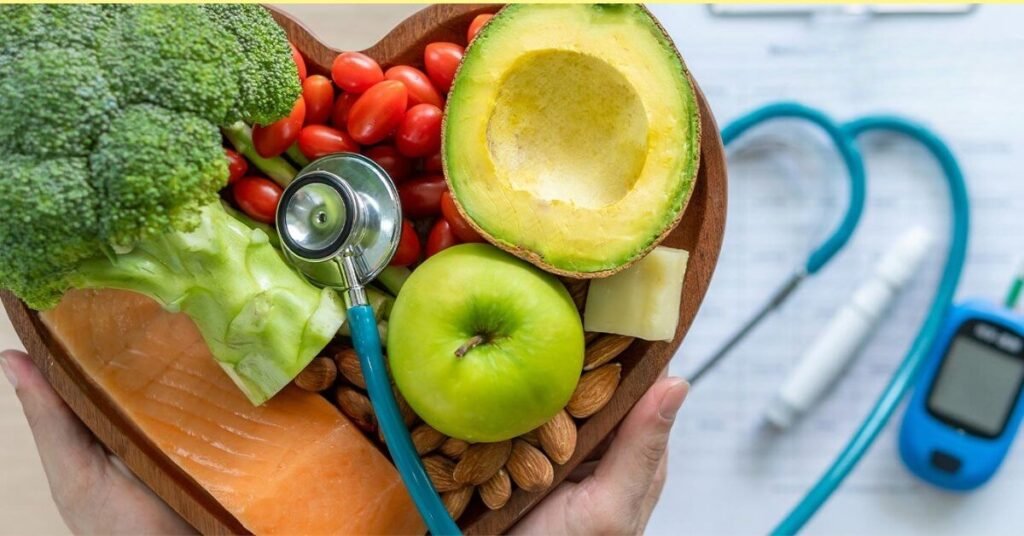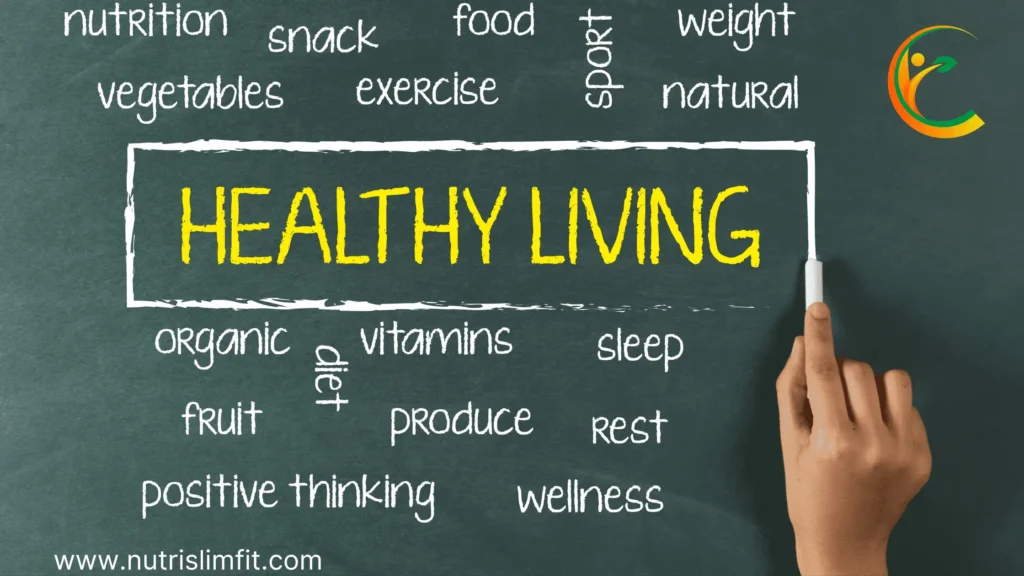Dietary decisions have a significant impact on one’s capacity to maintain stable blood sugar levels and avoid spikes and crashes, particularly for those dealing with insulin resistance, metabolic syndrome, or type 2 diabetes. You can control your blood sugar levels through nutrition by eating foods that release sugar into the bloodstream gradually and require less insulin. The best Foods for Controlling Blood Sugar and Insulin are listed in this article, along with tips for meal planning and indicators that your diet needs to be adjusted.
Healthy Foods for stabilizing Insulin and lowering and controlling Blood Sugar Levels through Diet
How Diet Impacts Blood Sugar and Insulin
Carbohydrates are broken down by the body into glucose, which is then released into the bloodstream. The pancreas secretes the hormone insulin, which instructs cells to take up glucose from the blood to use as fuel or store. Insulin resistance is a condition in which cells do not respond to insulin as well, which causes glucose to build up and an excess of insulin to be released in response. While certain food choices help to stabilise the system as a whole, others exacerbate these imbalances.
Foods That Help Stabilize Blood Sugar

Select meals that absorb gradually to avoid abrupt spikes in blood sugar levels. Among the best choices are:
- Non-starchy Vegetables
Broccoli, carrots, peppers, and greens are high in fibre, which slows down digestion.
- Protein Foods
The blood sugar impact of meats, eggs, nuts, seeds, beans, and lentils is negligible.
- Healthy Fats
Avocado, fatty fish, olive oil, and slow digestion all help you feel fuller for longer.
- High-Fibre Foods
Foods that delay stomach emptying include oats, quinoa, flax, berries, and legumes.
- Foods Low in Glycemic Index
Dairy, nuts, and non-starchy veggies all cause a slight spike in blood sugar.
Foods to Avoid for Unstable Blood Sugar
Conversely, some choices quickly increase blood sugar levels. Restricting these aids in mitigating fluctuations:
- Sugar-Sweetened Beverages
Blood sugar is spiked by sodas, juices, and sweetened coffees and teas.
- Refined Carbohydrates
Fast-absorbing foods without fibre include bread, pastries, chips, and white rice.
- Processed Foods
Fast food, frozen dinners, and sweets are heavy in sugar, carbohydrates, and bad fats.
Here is a sample Indian meal plan focused on stabilizing insulin and blood sugar levels:
Breakfast: Besan chila (gram flour pancake) with vegetables and plain yogurt
Lunch: Moong dal khichdi with raita, stir-fried vegetables, and a small multigrain chapati
Snack: Roasted chana with a handful of nuts like almonds or walnuts
Dinner: Grilled fish like pomfret or mackerel, sauteed spinach, and brown rice
Dessert: Fresh fruit like berries or Indian gooseberries
Tips:
– Choose complex carbohydrates like millets (ragi, bajra, jowar), whole grains, dals, beans and lentils.
– Include non-starchy vegetables like spinach, eggplant, okra, broccoli, tomato, peppers.
– Add herbs, spices and lime juice for flavor instead of sugar.
– Use healthy fats like olive oil, mustard oil, ghee, nuts and seeds.
– Avoid sweets, fruit juices, white rice, refined flour (maida), and deep fried foods.
– Stay hydrated with water, buttermilk, and lemon water.
– Exercise daily, manage stress, and get enough sleep.
This meal plan provides balanced nutrition with complex carbs, fiber-rich vegetables, plant-based protein and healthy fats to maintain steady blood sugar levels all day long. Adjust food choices as needed to suit your tastes and needs.
Lifestyle Tips for Better Blood Sugar Control
- Exercise on a regular basis to stay active and sensitises cells to insulin.
- Select complete, minimally processed foods for improved nutrition and fibre.
- Control your stress levels because cortisol has an impact on how your body regulates glucose.
- Make sleep a priority; insufficient sleep makes insulin sensitivity worse.
Warning Indices That Your Diet Needs to Change
- Fasting blood sugar over 100 mg/dL
- Post-meal spikes over 140 mg/dL
- Triglycerides over 150 mg/dL
- Feeling shaky, sweaty or unfocused between meals – adjust macros!
Conclusion
Insulin and blood sugar remain more stable when sources of carbohydrates are limited, high-fiber foods, protein, and healthy fats are prioritised, and sugar, refined grains, and processed foods are minimised. Eat a low-glycemic, well-balanced diet that emphasises whole foods. Consult a nutritionist or dietitian if you require more specialised meal planning advice due to medical conditions. Making wise dietary decisions that stabilise the relationship between insulin and blood sugar has significant advantages.


